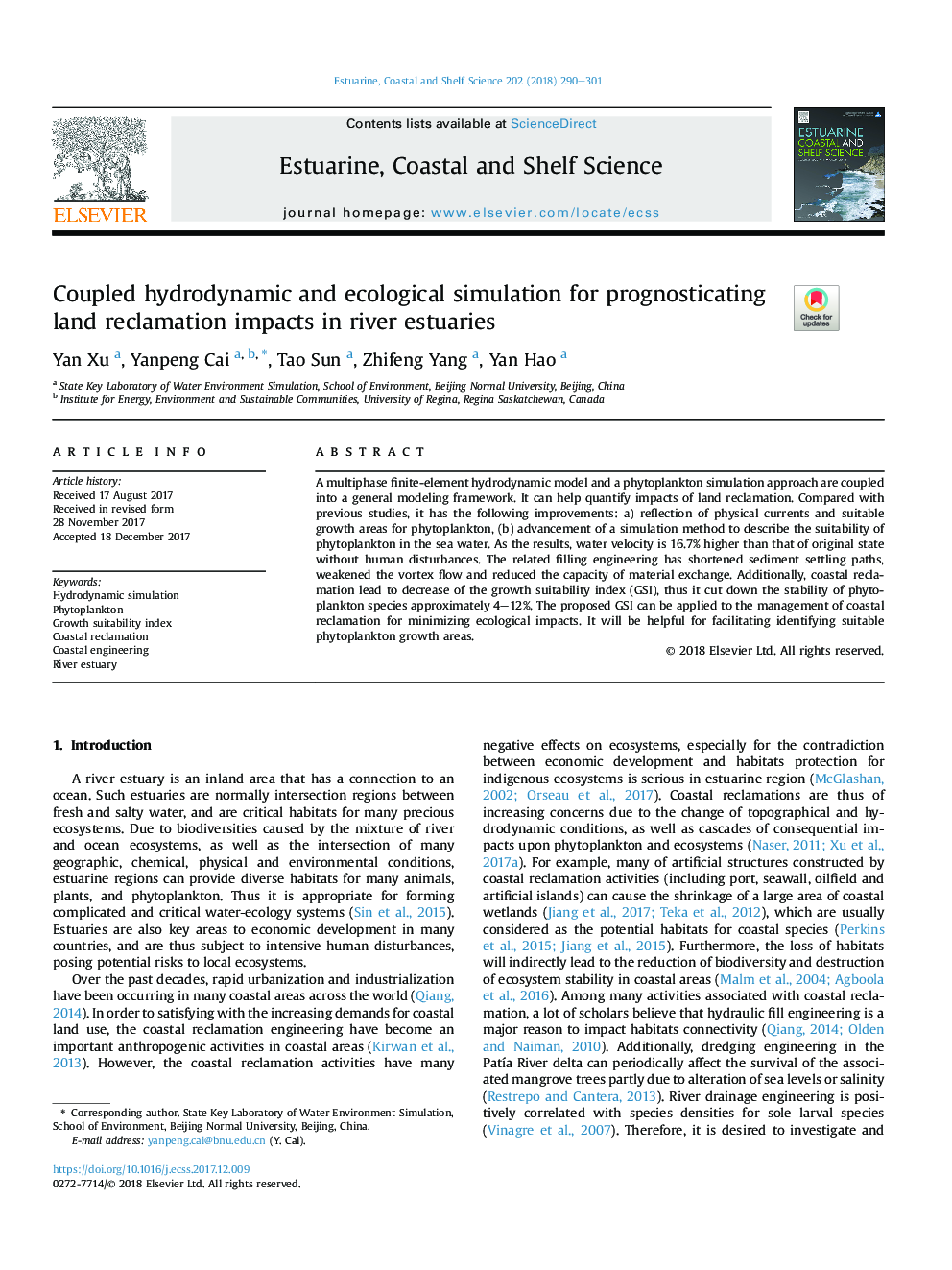| Article ID | Journal | Published Year | Pages | File Type |
|---|---|---|---|---|
| 8885027 | Estuarine, Coastal and Shelf Science | 2018 | 12 Pages |
Abstract
A multiphase finite-element hydrodynamic model and a phytoplankton simulation approach are coupled into a general modeling framework. It can help quantify impacts of land reclamation. Compared with previous studies, it has the following improvements: a) reflection of physical currents and suitable growth areas for phytoplankton, (b) advancement of a simulation method to describe the suitability of phytoplankton in the sea water. As the results, water velocity is 16.7% higher than that of original state without human disturbances. The related filling engineering has shortened sediment settling paths, weakened the vortex flow and reduced the capacity of material exchange. Additionally, coastal reclamation lead to decrease of the growth suitability index (GSI), thus it cut down the stability of phytoplankton species approximately 4-12%. The proposed GSI can be applied to the management of coastal reclamation for minimizing ecological impacts. It will be helpful for facilitating identifying suitable phytoplankton growth areas.
Related Topics
Physical Sciences and Engineering
Earth and Planetary Sciences
Geology
Authors
Yan Xu, Yanpeng Cai, Tao Sun, Zhifeng Yang, Yan Hao,
